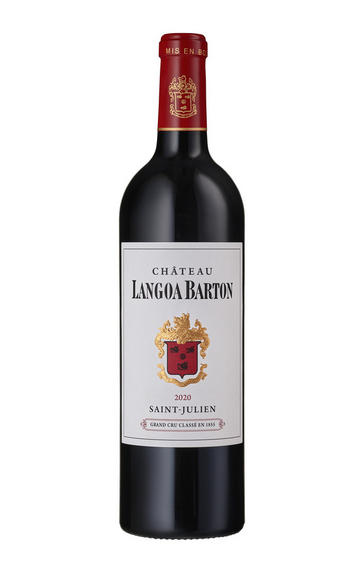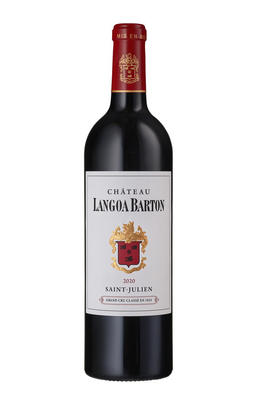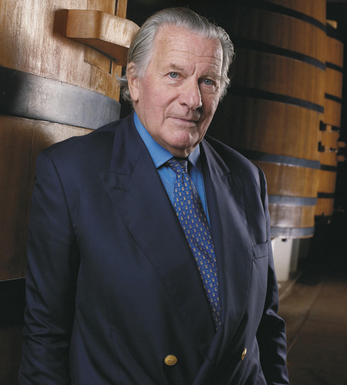
2020 Château Langoa Barton, St Julien, Bordeaux

Critics reviews
Drink from 2026 to 2055
Neal Martin, Vinous (May 2021)
Drink from 2026 to 2040
Antonio Galloni, Vinous (June 2021)
Drink from 2027 to 2042
Jane Anson, Decanter (April 2021)
Drink from 2026 to 2050
Lisa Perrotti-Brown MW, Wine Advocate (May 2021)
Jancis Robinson MW, JancsRobinson.com (April 2021)
James Suckling, JamesSuckling.com (April 2021)
About this WINE

Chateau Langoa Barton
Château Langoa-Barton, 3rd Classified Growth, was the first of the two Bordeaux wine estates bought by Hugh Barton in the 1820s, the other being Léoville-Barton, 2nd Classified Growth.
Hugh Barton was a descendant of an Irish family which settled in Bordeaux in the 18th century and which has a long and distinguished history in the region’s wine trade. Both properties are still family-owned and run and together represent the longest tradition of unchanged ownership in the Médoc. After the death of the late Anthony Barton in 2022, his daughter Lilian and grandson Damien Barton have now taken the reins.
Langoa Barton has 20 hectares of vineyards (Cabernet Sauvignon 71%, Merlot 21%, Cabernet Franc 8%) lie on gravelly-clay soils. Vinification includes 18 months' maturation in oak barriques (50% new). Langoa Barton is vinified and matured in exactly the same way as Léoville-Barton and any difference between them must be put down to variations in the soils and exposure of their respective vineyard blocks.
Both Langoa and Léoville wines are models of typical St Julien restraint and elegance, and the château’s fair pricing policy, always with an eye to the long term , has won it many loyal friends amongst its customers. For years, Langoa Barton was considered slightly lighter and more forward than Léoville. However, in the last decade it has become noticeably deeper in colour and richer and more concentrated on the palate. Langoa Barton is now often the equal of Léoville.

St Julien
St Julien is the smallest of the "Big Four" Médoc communes. Although, without any First Growths, St Julien is recognised to be the most consistent of the main communes, with several châteaux turning out impressive wines year after year.
St Julien itself is much more of a village than Pauillac and almost all of the notable properties lie to its south. Its most northerly château is Ch. Léoville Las Cases (whose vineyards actually adjoin those of Latour in Pauillac) but, further south, suitable vineyard land gives way to arable farming and livestock until the Margaux appellation is reached.
The soil is gravelly and finer than that of Pauillac, and without the iron content which gives Pauillac its stature. The homogeneous soils in the vineyards (which extend over a relatively small area of just over 700 hectares) give the commune a unified character.
The wines can be assessed as much by texture as flavour, and there is a sleek, wholesome character to the best. Elegance, harmony and perfect balance and weight, with hints of cassis and cedar, are what epitomise classic St Julien wines. At their very best they combine Margaux’s elegance and refinement with Pauillac’s power and substance.
Ch. Léoville Las Cases produces arguably the most sought-after St Julien, and in any reassessment of the 1855 Classification it would almost certainly warrant being elevated to First Growth status.
Recommended Châteaux: Ch. Léoville Las Cases, Ch.Léoville Barton, Ch Léoville Poyferré, Ch. Ducru-Beaucaillou, Ch Langoa Barton, Ch Gruaud Larose, Ch. Branaire-Ducru, Ch. Beychevelle

Cabernet Sauvignon Blend
Cabernet Sauvignon lends itself particularly well in blends with Merlot. This is actually the archetypal Bordeaux blend, though in different proportions in the sub-regions and sometimes topped up with Cabernet Franc, Malbec, and Petit Verdot.
In the Médoc and Graves the percentage of Cabernet Sauvignon in the blend can range from 95% (Mouton-Rothschild) to as low as 40%. It is particularly suited to the dry, warm, free- draining, gravel-rich soils and is responsible for the redolent cassis characteristics as well as the depth of colour, tannic structure and pronounced acidity of Médoc wines. However 100% Cabernet Sauvignon wines can be slightly hollow-tasting in the middle palate and Merlot with its generous, fleshy fruit flavours acts as a perfect foil by filling in this cavity.
In St-Emilion and Pomerol, the blends are Merlot dominated as Cabernet Sauvignon can struggle to ripen there - when it is included, it adds structure and body to the wine. Sassicaia is the most famous Bordeaux blend in Italy and has spawned many imitations, whereby the blend is now firmly established in the New World and particularly in California and Australia.


Buying options
Add to wishlist
Description
Cabernet Sauvignon 53.5%, Merlot 38%, Cabernet Franc 8.5%
This is the 200th vintage of the wine for the Barton family, and the last in its current cellar. Damien Barton Sartorius explains that St Julien retained some humidity during the drought, and September retained the freshness. This is succulent, with violets, hedgerow fruits and a twist of maraschino cherry. Its freshness comes across in a remarkable, almost angular, tension. Damien feels that Langoa will become even better in the new cellar, but this bids au revoir to its old home in real style.
Drink 2028-2045
wine at a glance
Delivery and quality guarantee